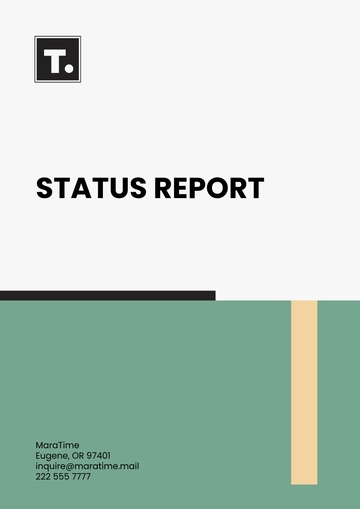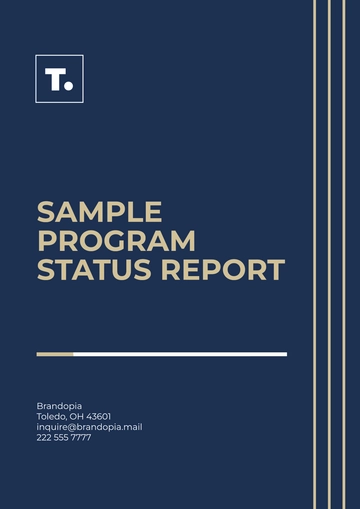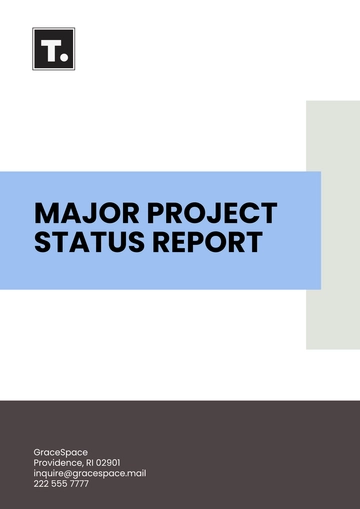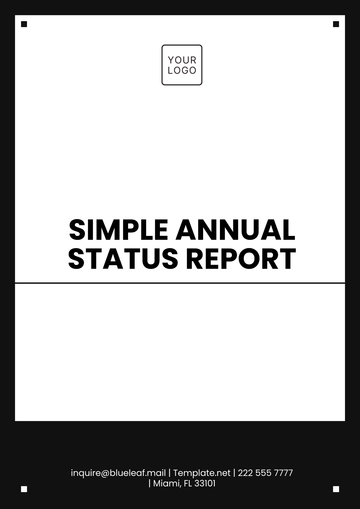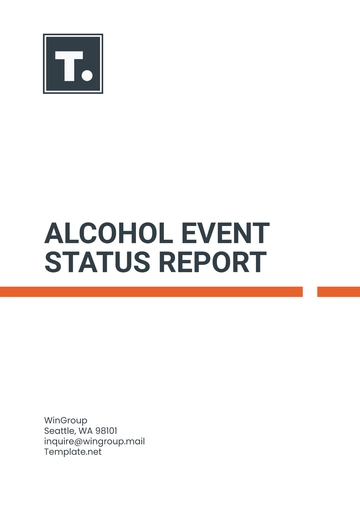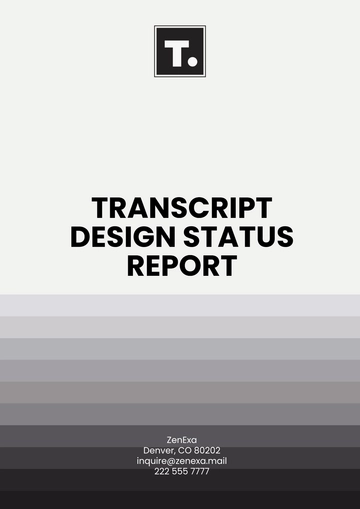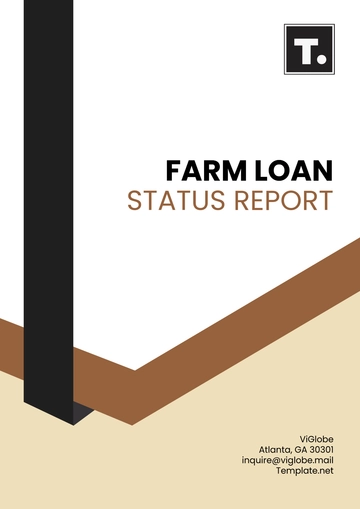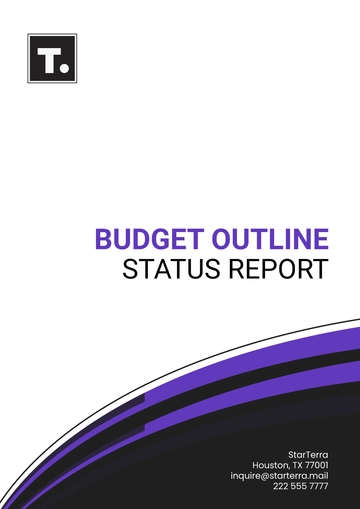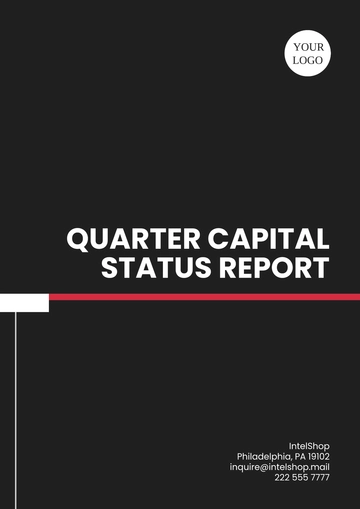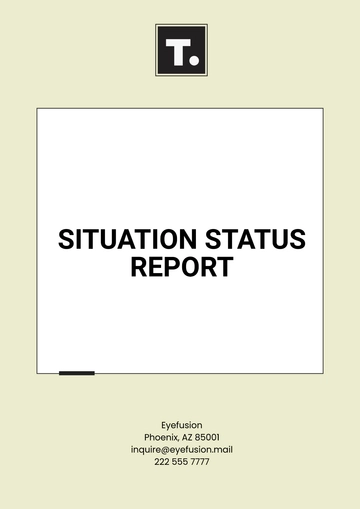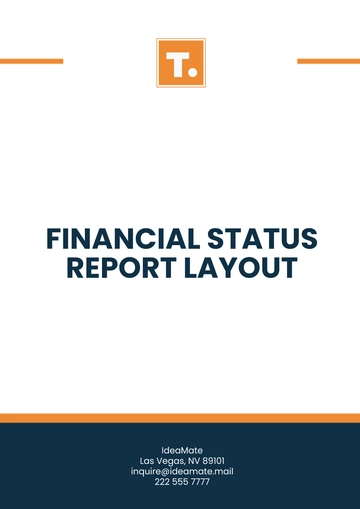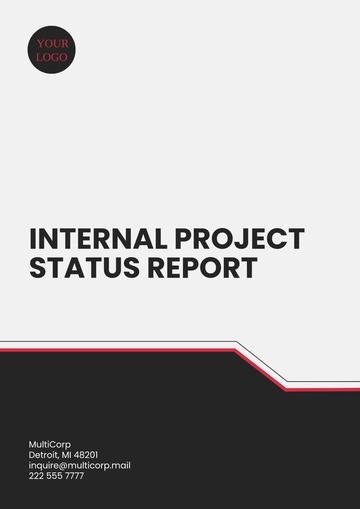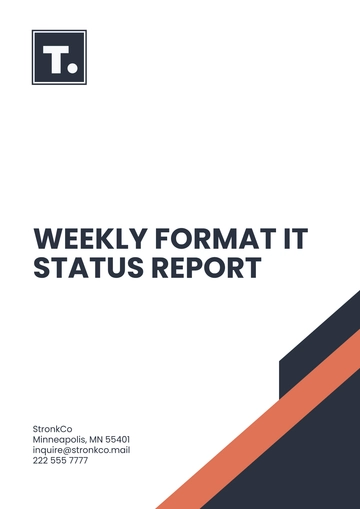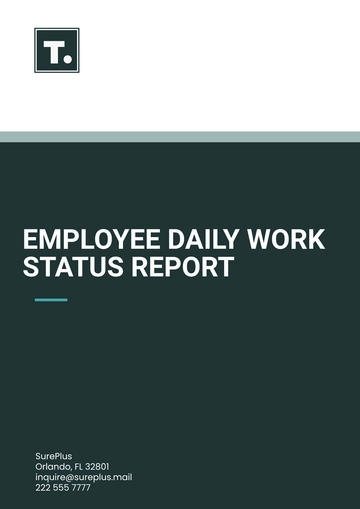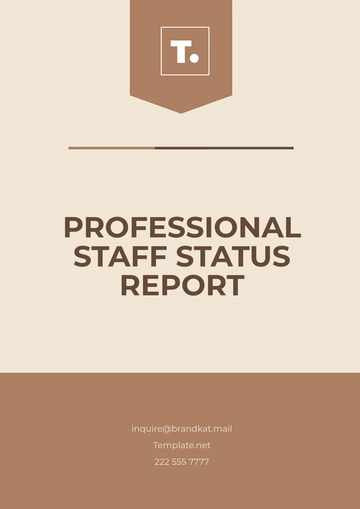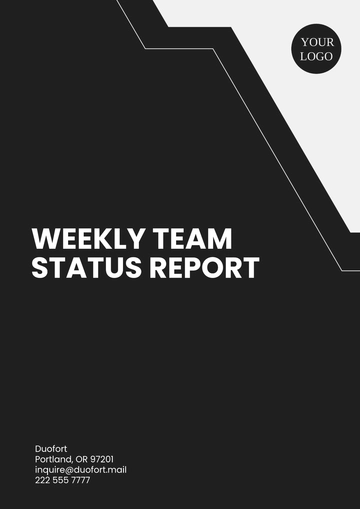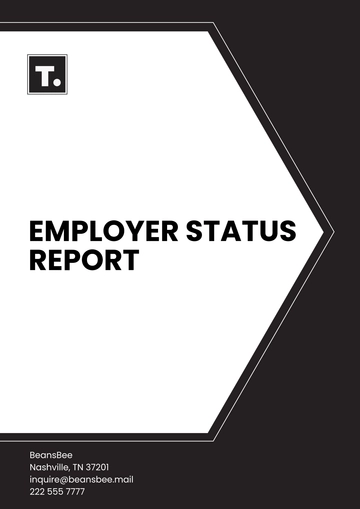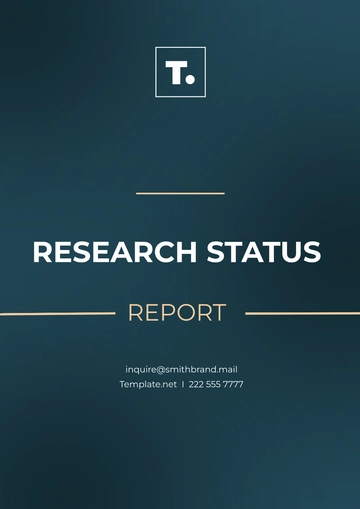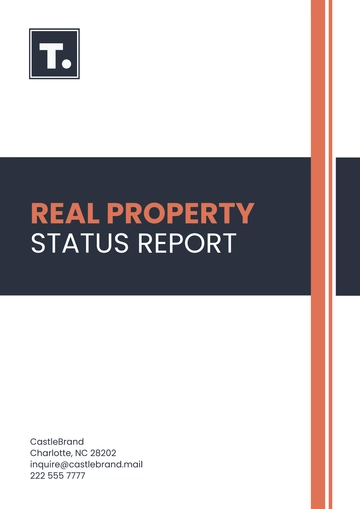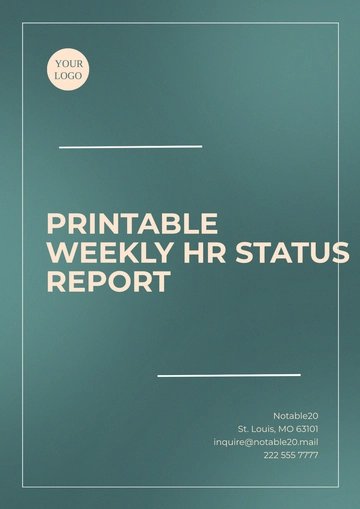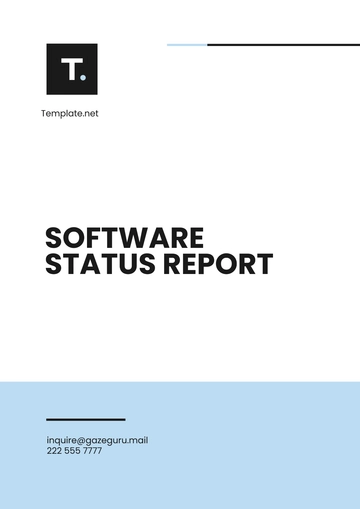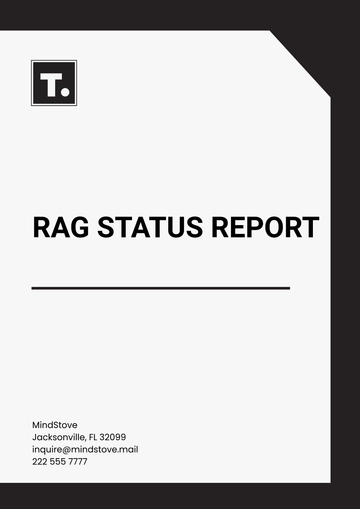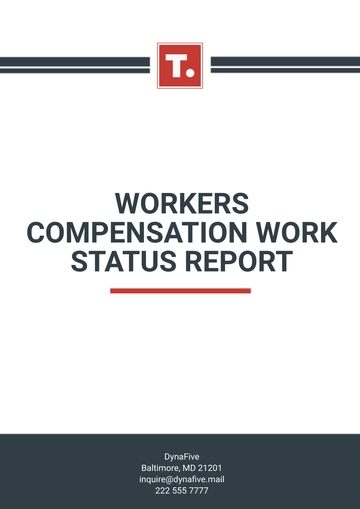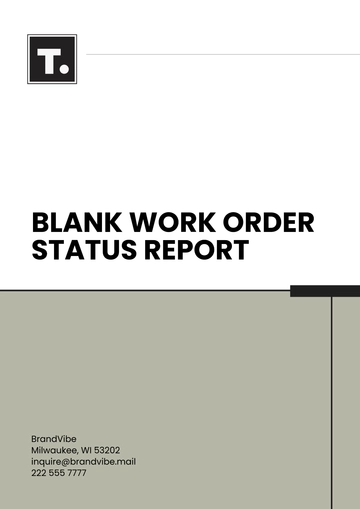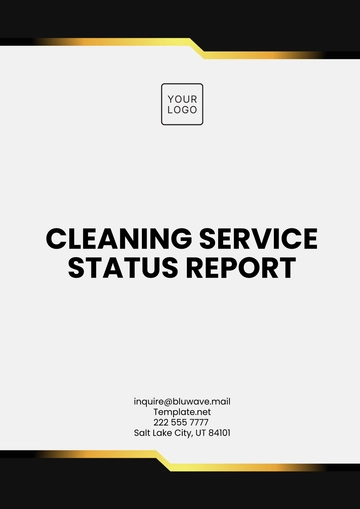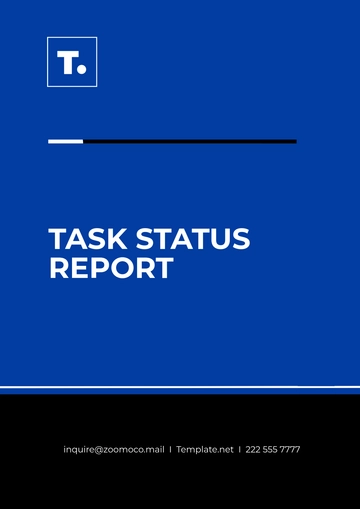Free Car Rental Status Report
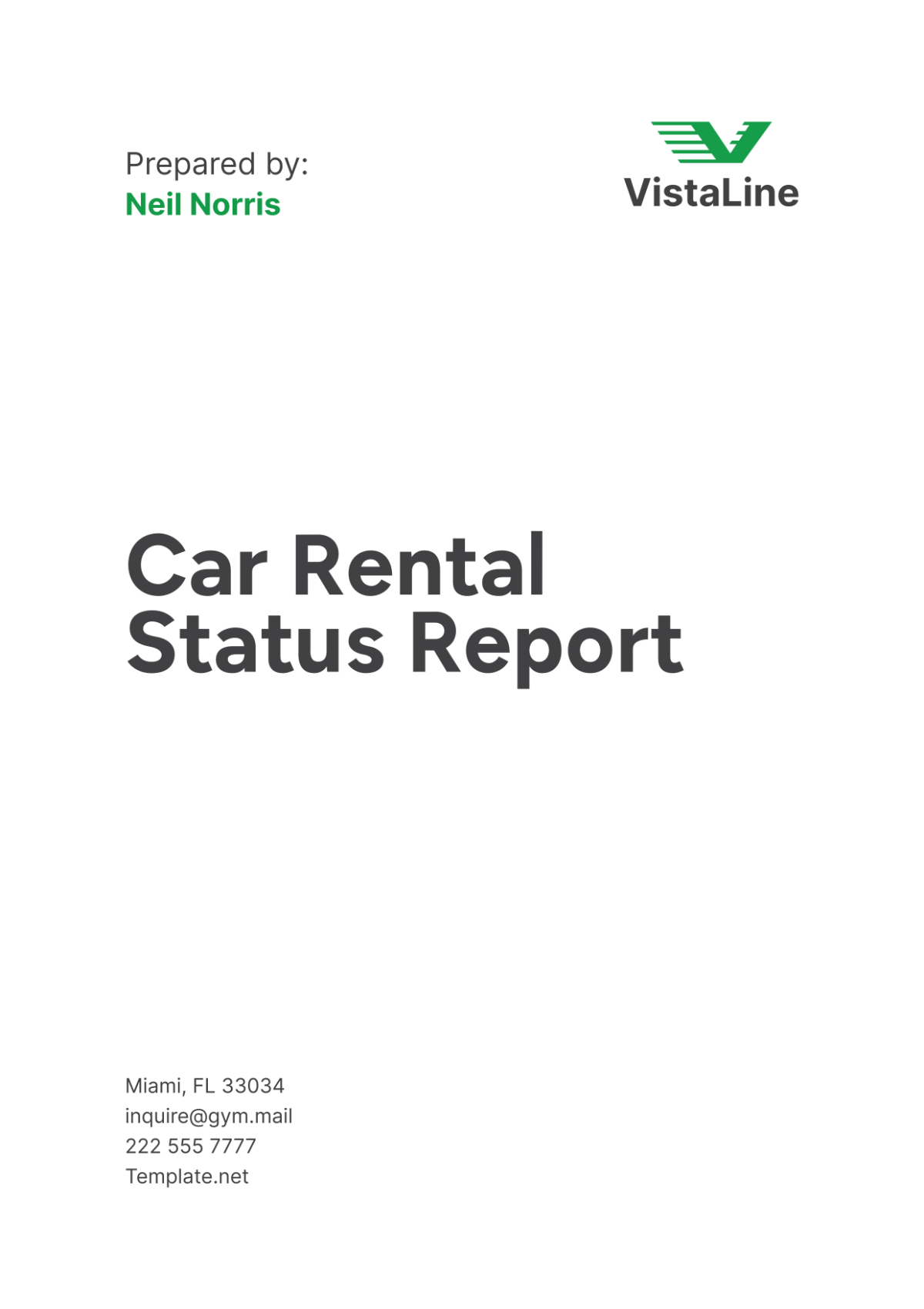
Executive Summary
This report provides a comprehensive analysis of the current status of [Your Company Name]'s car rental business. It covers various aspects, including fleet management, rental statistics, customer feedback, financial performance, and strategic initiatives. The purpose of this report is to offer an in-depth understanding of our operations, highlight key performance indicators, and suggest actionable insights to enhance our services.
Fleet Management: The management of our fleet is a critical component of our operations. Our fleet includes a diverse range of vehicles such as economy cars, compact cars, intermediates, full-size vehicles, luxury cars, SUVs, and vans. We currently maintain a fleet size that meets the demands of our customer base, ensuring high utilization rates and minimal downtime. Our fleet management practices focus on regular maintenance and timely procurement of new vehicles to replace older ones. This ensures that we can offer reliable, high-quality vehicles to our customers, enhancing their overall rental experience.
Rental Statistics: Rental statistics provide a clear picture of our operational performance. This report details rental duration trends, customer demographics, and seasonal variations in rental activity. Short-term rentals (1-3 days) are the most popular among our customers, comprising 45% of our total rentals, followed by medium-term rentals (4-7 days) at 35%. Our customer base is diverse, with a significant portion being business travelers (40%), followed by tourists (35%), local residents (15%), and others (10%). Understanding these patterns helps us tailor our services to meet the specific needs of different customer segments, ensuring optimal fleet utilization and customer satisfaction.
Customer Feedback: Customer feedback is a vital component of our service improvement strategy. This report consolidates feedback from various channels, including surveys and reviews. Overall, our customers rate their experience with us highly, particularly in terms of vehicle condition, customer service, pricing, and the booking process. The feedback also highlights areas for improvement, such as enhancing the booking experience and offering more flexible pricing options. Our action plan includes upgrading our online booking platform and implementing dynamic pricing models to address these concerns, aiming to provide a seamless and customer-friendly rental process.
Financial Performance: The financial performance section of this report evaluates our revenue, expenses, and profitability. For the current fiscal year, [Your Company Name] has achieved a total revenue of $5 million, with operating expenses amounting to $3 million, resulting in a net profit of $2 million. Our financial health is strong, supported by efficient cost management and strategic investments in fleet maintenance, marketing, and technology upgrades. A detailed budget allocation is provided, outlining our expenditure on critical areas that drive operational efficiency and growth.
Strategic Initiatives: To maintain our competitive edge and ensure sustainable growth, we have outlined several strategic initiatives. These include expansion plans to new locations, enhancing our marketing strategies, and integrating advanced technologies into our operations. We are focusing on digital marketing campaigns, partnerships with travel agencies, and loyalty programs to attract and retain customers. Additionally, we are developing a mobile app to facilitate easy booking and leveraging data analytics to optimize fleet utilization and customer service. Our commitment to sustainability is reflected in our plans to introduce electric vehicles and implement green operational practices.
This report provides a thorough analysis of the current status and future direction of [Your Company Name]'s car rental business. By focusing on fleet management, understanding rental trends, responding to customer feedback, maintaining strong financial performance, and implementing strategic initiatives, we aim to enhance our services and achieve long-term success. The actionable insights presented in this report will guide our efforts to improve customer satisfaction, operational efficiency, and market presence in the highly competitive car rental industry.
1. Introduction
[Your Company Name] operates a dynamic and customer-focused car rental business. Our mission is to provide high-quality rental vehicles and exceptional service to meet the diverse needs of our clients. This report evaluates our current performance and identifies opportunities for improvement to maintain our competitive edge in the market.
2. Fleet Management
Fleet management is critical to our car rental operations, ensuring we offer a variety of well-maintained vehicles to our customers. This section reviews the current status of our fleet, including vehicle types, utilization rates, maintenance schedules, and future procurement plans.
2.1 Fleet Composition
Vehicle Type | Number of Vehicles | Average Age (Years) | Utilization Rate (%) |
|---|---|---|---|
Economy | 50 | 2 | 85 |
Compact | 40 | 3 | 80 |
Intermediate | 30 | 2 | 75 |
Full Size | 20 | 1 | 70 |
Luxury | 10 | 2 | 65 |
SUVs | 15 | 1.5 | 90 |
Vans | 5 | 2 | 50 |
2.2 Maintenance and Upkeep
Maintaining our fleet in top condition is essential for customer satisfaction and safety. We have a rigorous maintenance schedule to ensure all vehicles are serviced regularly.
Preventive Maintenance: Conducted every 5,000 miles or six months.
Corrective Maintenance: Immediate response to any reported issues.
2.3 Future Procurement Plans
To keep up with demand and modernize our fleet, we plan to procure the following vehicles in the next fiscal year:
Vehicle Type | Quantity | Budget Allocation ($) |
|---|---|---|
Economy | 10 | 200,000 |
Compact | 15 | 300,000 |
SUVs | 5 | 250,000 |
Luxury | 5 | 400,000 |
3. Rental Statistics
This section presents detailed statistics on car rentals, including rental duration, customer demographics, and seasonal trends. Understanding these metrics helps us tailor our services to better meet customer needs, optimize fleet utilization, and strategically plan for peak and off-peak seasons.
3.1 Rental Duration
Rental duration is a crucial metric for assessing fleet utilization and revenue generation. Different rental periods appeal to different customer segments, influencing our pricing strategies and fleet availability.
Rental Duration Analysis
Rental Period | Percentage of Rentals (%) |
|---|---|
1-3 days | 45 |
4-7 days | 35 |
8-14 days | 15 |
15+ days | 5 |
1-3 days (45%): Short-term rentals are the most popular, accounting for nearly half of all rentals. This category primarily includes business travelers who need a vehicle for a short trip or meeting, as well as tourists on a brief visit. The high demand for short-term rentals indicates the importance of maintaining a readily available fleet of well-maintained, reliable vehicles to meet this quick turnover.
4-7 days (35%): Medium-term rentals are the second most common, representing over a third of our rentals. This duration is preferred by vacationers and tourists who typically rent cars for a week-long holiday. Our strategy includes offering attractive weekly rental rates and packages to cater to this demographic, ensuring competitive pricing while maximizing fleet usage.
8-14 days (15%): Long-term rentals for up to two weeks are less frequent but still significant. These rentals often appeal to corporate clients on extended business trips, or tourists who prefer extended vacations. To encourage longer rentals, we provide discounted rates for extended periods, adding value for customers while increasing revenue stability.
15+ days (5%): Extended rentals of more than two weeks are the least common. This category usually includes customers requiring a vehicle for temporary relocation or long-term business projects. While less frequent, extended rentals are valuable for maintaining consistent fleet utilization over longer periods and reducing the frequency of vehicle returns and reassignments.
Rental Duration Trends
Understanding rental duration trends helps us allocate our fleet effectively, ensuring availability for short-term, high-turnover rentals while also accommodating longer-term bookings that provide steady income.
3.2 Customer Demographics
Analyzing customer demographics allows us to identify key market segments and tailor our services to their specific needs. This data helps in developing targeted marketing strategies and improving customer satisfaction.
Customer Demographic Breakdown
Demographic | Percentage of Customers (%) |
|---|---|
Business Travelers | 40 |
Tourists | 35 |
Local Residents | 15 |
Others | 10 |
Business Travelers (40%): Business travelers are our largest customer segment, accounting for 40% of our rentals. They typically require reliable, comfortable vehicles for short-term use, often with features like GPS and Wi-Fi. To cater to this segment, we focus on maintaining a fleet of mid-range to luxury vehicles, providing corporate discounts, and ensuring quick and efficient rental processes.
Tourists (35%): Tourists make up 35% of our customer base. They often seek a mix of economy and compact cars for sightseeing and travel. Our strategy for tourists includes offering travel packages, partnerships with local hotels and tourist attractions, and ensuring availability of vehicles during peak tourist seasons.
Local Residents (15%): Local residents represent 15% of our rentals, typically needing vehicles for short-term requirements like weekend trips or while their personal vehicles are under maintenance. For this segment, we offer competitive daily rates, local discounts, and convenient pick-up and drop-off locations.
Others (10%): This category includes diverse customers such as students, temporary residents, and those requiring specialized vehicles. We aim to cater to this segment by maintaining a varied fleet and offering flexible rental terms.
Customer Demographic Insights
Understanding our customer demographics enables us to customize our marketing and operational strategies, ensuring we meet the specific needs of each segment. This approach helps in building customer loyalty and attracting new clients through tailored service offerings.
3.3 Seasonal Trends
Seasonal trends have a significant impact on our rental business, influencing demand patterns and revenue. By analyzing these trends, we can optimize fleet management, pricing strategies, and marketing efforts to align with seasonal fluctuations.
Seasonal Rental Patterns
Our rental business experiences notable fluctuations based on the time of year:
Peak Season (June to August): The summer months see the highest demand for car rentals due to increased tourist activity. Families on vacation, local events, and favorable weather conditions contribute to the surge in rentals. During this period, we implement dynamic pricing to maximize revenue and ensure sufficient vehicle availability by strategically managing fleet maintenance and turnover.
Off-Peak Season (January to March): The first quarter of the year typically experiences lower rental activity. Factors contributing to this include the post-holiday lull and adverse weather conditions in some regions. To counteract the drop in demand, we offer promotional discounts, loyalty rewards, and targeted marketing campaigns to attract customers during these months. Additionally, this period is utilized for fleet maintenance and upgrading vehicles to prepare for the upcoming peak season.
Seasonal Strategies
To effectively manage seasonal demand variations, we adopt several strategic measures:
Dynamic Pricing: Adjusting rental rates based on demand helps in maximizing revenue during peak seasons and attracting customers during off-peak periods.
Fleet Allocation: Ensuring a balanced mix of vehicle types and timely maintenance schedules to meet varying customer needs throughout the year.
Marketing Campaigns: Seasonal promotions, holiday packages, and targeted advertising to boost rentals during slower months.
By analyzing rental duration, customer demographics, and seasonal trends, we gain valuable insights into our car rental business's performance. These insights enable us to optimize our operations, tailor our services to meet customer needs, and strategically plan for both peak and off-peak seasons. Understanding these metrics helps us enhance customer satisfaction, improve fleet utilization, and drive sustainable growth in the competitive car rental market.
4. Customer Feedback
Customer satisfaction is paramount to our success. This section summarizes the feedback received from our clients through surveys and reviews. Understanding and addressing customer feedback is critical to maintaining high service standards and improving our offerings.
4.1 Survey Results
Our customer feedback survey is designed to capture insights on various aspects of our service. Customers rate their satisfaction on a scale from 1 to 5, with 1 being "Very Dissatisfied" and 5 being "Very Satisfied." The survey results help us identify strengths and areas for improvement.
Customer Satisfaction Ratings
Satisfaction Criteria | Rating (out of 5) | Interpretation |
|---|---|---|
Vehicle Condition | 4.7 | Excellent |
Customer Service | 4.8 | Excellent |
Pricing | 4.5 | Very Good |
Booking Experience | 4.6 | Very Good |
Interpretation of Ratings:
Vehicle Condition (4.7/5): Customers consistently rate our vehicles highly, indicating that our fleet maintenance and quality control measures are effective. This high rating reflects well-maintained, reliable vehicles that meet customer expectations.
Customer Service (4.8/5): Exceptional customer service is a cornerstone of our business. This rating shows that our staff is perceived as friendly, helpful, and professional, enhancing the overall rental experience.
Pricing (4.5/5): While our pricing is rated very good, there is room for improvement. Some customers may find our rates slightly high, suggesting the need for more competitive pricing strategies, especially during off-peak seasons.
Booking Experience (4.6/5): The booking process is also highly rated, though we recognize the potential for enhancements to make it even more seamless and user-friendly.
Survey Results Analysis
The high ratings across these criteria indicate strong performance in key areas. However, continuous improvement is necessary to maintain and exceed these satisfaction levels.
4.2 Customer Reviews
Customer reviews provide qualitative insights into their experiences with our services. They highlight what customers appreciate and where they see opportunities for improvement.
Positive Feedback
Customers have expressed high satisfaction with our:
Well-Maintained Vehicles: The condition and cleanliness of our vehicles are frequently praised, reflecting the effectiveness of our maintenance protocols.
Friendly Staff: Our team is commended for their professionalism, friendliness, and willingness to assist, which significantly enhances the customer experience.
Areas for Improvement
Some customers have identified areas where we could improve:
Booking Process: While generally rated highly, a few customers have suggested that our booking platform could be more intuitive and faster. Specific feedback includes desires for a more streamlined process and fewer steps to complete a booking.
Pricing Flexibility: Customers have mentioned that our pricing structure could benefit from greater flexibility, particularly with discounts or special rates for longer rentals or off-peak periods.
Customer Review Insights
These reviews provide valuable feedback that can guide our improvement efforts. Addressing these areas will help enhance overall customer satisfaction and loyalty.
4.3 Action Plan
To address customer feedback and improve our services, we have developed the following action plan:
Enhanced Booking System
Objective: Upgrade our online booking platform to provide a more seamless experience.
Actions:
User Interface Redesign: Simplify the booking process by reducing the number of steps required to complete a reservation.
Performance Improvements: Ensure faster loading times and responsiveness.
Mobile Optimization: Enhance the mobile booking experience to cater to the increasing number of customers using mobile devices.
Flexible Pricing
Objective: Introduce dynamic pricing models to offer better rates during off-peak periods and attract a broader customer base.
Actions:
Seasonal Discounts: Implement discounts and special offers during off-peak seasons to encourage rentals.
Long-Term Rental Rates: Offer more attractive rates for extended rentals to incentivize longer booking durations.
Loyalty Programs: Develop a loyalty program to reward repeat customers with exclusive discounts and benefits.
Implementation Timeline
Booking System Upgrade: Completion within the next six months, with phased rollouts and customer feedback integration.
Dynamic Pricing Models: Introduce new pricing structures within the next quarter, with ongoing adjustments based on market response and customer feedback.
Expected Outcomes
Improved Customer Experience: A more intuitive and faster booking process will enhance customer satisfaction and reduce abandonment rates during the booking phase.
Increased Competitiveness: Flexible pricing will make our offerings more attractive, especially during periods of lower demand, thus maintaining steady revenue streams.
Enhanced Customer Loyalty: A well-designed loyalty program will encourage repeat business and foster long-term customer relationships.
By systematically addressing customer feedback through targeted improvements in our booking system and pricing strategies, we aim to enhance overall satisfaction and loyalty. Continuous monitoring and adaptation will ensure that we meet evolving customer needs and maintain our position as a leader in the car rental industry.
5. Financial Performance
This section evaluates the financial health of our car rental business, including revenue, expenses, and profitability.
5.1 Revenue and Expenses
Financial Metric | Amount ($) |
|---|---|
Total Revenue | 5,000,000 |
Operating Expenses | 3,000,000 |
Net Profit | 2,000,000 |
5.2 Profitability Analysis
Our profitability remains strong, with a net profit margin of 40%. This is attributed to efficient fleet management and cost control measures.
5.3 Budget Allocation
Expense Category | Budget ($) |
|---|---|
Fleet Maintenance | 500,000 |
Marketing | 300,000 |
Staff Training | 200,000 |
Technology Upgrade | 200,000 |
6. Strategic Initiatives
To ensure continued growth and success, we have identified several strategic initiatives.
6.1 Expansion Plans
We plan to expand our operations to new locations, targeting high-demand regions. This includes opening new rental offices and increasing our fleet size.
6.2 Marketing Strategies
Our marketing efforts will focus on digital campaigns, partnerships with travel agencies, and loyalty programs to attract and retain customers.
6.3 Technology Integration
Investing in technology is crucial for improving our operations. Key initiatives include:
Mobile App Development: To facilitate easy booking and enhance customer engagement.
Data Analytics: Leveraging data to optimize fleet utilization and customer service.
6.4 Sustainability Efforts
We are committed to sustainability and plan to incorporate eco-friendly practices:
Electric Vehicles: Gradually introducing electric cars to our fleet.
Green Operations: Implementing energy-efficient practices in our offices and rental locations.
7. Conclusion
This report highlights the current status and performance of [Your Company Name]'s car rental business. While our operations are robust and profitable, there are opportunities for growth and improvement. By focusing on customer satisfaction, expanding our market presence, and leveraging technology, we can continue to lead in the car rental industry. Our strategic initiatives and commitment to sustainability will drive our success in the years to come.
Prepared by: [Your Name]
Contact Information:
[Your Email]
[Your Company Email]
[Your Company Address]
[Your Company Number]
[Your Company Website]
[Your Company Social Media]
Appendices
Appendix A: Detailed Fleet Maintenance Schedule
Appendix B: Customer Feedback Survey Results
Appendix C: Financial Statements
- 100% Customizable, free editor
- Access 1 Million+ Templates, photo’s & graphics
- Download or share as a template
- Click and replace photos, graphics, text, backgrounds
- Resize, crop, AI write & more
- Access advanced editor
Enhance your reporting with Template.net's Car Rental Status Report Template. Tailored to track and present the performance metrics of your car rental operations, this template is fully editable and customizable with our AI editor tool. Ensure accurate updates and informed decisions to drive your business forward. Optimize your reporting process with Template.net.
You may also like
- Sales Report
- Daily Report
- Project Report
- Business Report
- Weekly Report
- Incident Report
- Annual Report
- Report Layout
- Report Design
- Progress Report
- Marketing Report
- Company Report
- Monthly Report
- Audit Report
- Status Report
- School Report
- Reports Hr
- Management Report
- Project Status Report
- Handover Report
- Health And Safety Report
- Restaurant Report
- Construction Report
- Research Report
- Evaluation Report
- Investigation Report
- Employee Report
- Advertising Report
- Weekly Status Report
- Project Management Report
- Finance Report
- Service Report
- Technical Report
- Meeting Report
- Quarterly Report
- Inspection Report
- Medical Report
- Test Report
- Summary Report
- Inventory Report
- Valuation Report
- Operations Report
- Payroll Report
- Training Report
- Job Report
- Case Report
- Performance Report
- Board Report
- Internal Audit Report
- Student Report
- Monthly Management Report
- Small Business Report
- Accident Report
- Call Center Report
- Activity Report
- IT and Software Report
- Internship Report
- Visit Report
- Product Report
- Book Report
- Property Report
- Recruitment Report
- University Report
- Event Report
- SEO Report
- Conference Report
- Narrative Report
- Nursing Home Report
- Preschool Report
- Call Report
- Customer Report
- Employee Incident Report
- Accomplishment Report
- Social Media Report
- Work From Home Report
- Security Report
- Damage Report
- Quality Report
- Internal Report
- Nurse Report
- Real Estate Report
- Hotel Report
- Equipment Report
- Credit Report
- Field Report
- Non Profit Report
- Maintenance Report
- News Report
- Survey Report
- Executive Report
- Law Firm Report
- Advertising Agency Report
- Interior Design Report
- Travel Agency Report
- Stock Report
- Salon Report
- Bug Report
- Workplace Report
- Action Report
- Investor Report
- Cleaning Services Report
- Consulting Report
- Freelancer Report
- Site Visit Report
- Trip Report
- Classroom Observation Report
- Vehicle Report
- Final Report
- Software Report
